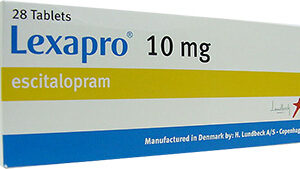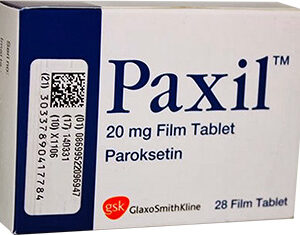Paxil Overview
Paxil, the trade name for paroxetine, is a medication primarily used in the management of several psychiatric disorders. Classified as a selective serotonin reuptake inhibitor (SSRI), it works by increasing the levels of serotonin in the brain, a neurotransmitter associated with mood regulation. Paxil’s chemical composition enables it to alleviate symptoms of depression, anxiety, and other related conditions by helping to restore the balance of serotonin.
Uses
Paxil is typically prescribed for the treatment of major depressive disorder, obsessive-compulsive disorder (OCD), panic disorder, social anxiety disorder, generalized anxiety disorder, and post-traumatic stress disorder (PTSD). It may be recommended for other uses at a physician’s discretion, taking into account off-label practices where Paxil has shown therapeutic benefits.
Dosage & Administration
Proper dosage of Paxil varies depending on the condition treated, patient age, and individual response to the medication. It is typically administered once per day, in the morning or evening, with or without food according to the patient’s tolerance. Initial dosages are often lower to reduce the risk of side effects, with possible gradual increments. Consistent use is key, and it can take several weeks to feel the full benefits. It is critical that patients follow their doctor’s instructions and not alter or discontinue their dosage without consultation.
Potential Side Effects
As with many antidepressants, Paxil carries the risk of side effects ranging from mild to severe. Common ones include dizziness, drowsiness, sleep disturbances, fatigue, nausea, dry mouth, loss of appetite, sweating, blurred vision, and sexual dysfunction. Some individuals may experience significant weight changes or severe mood alterations like increased anxiety or agitation. Rarely, Paxil can lead to serotonin syndrome, a potentially life-threatening condition when serotonin levels become too high.
Precautions & Warnings
Caution is advised when taking Paxil, especially for individuals with a history of suicidal thoughts, bipolar disorder, liver or kidney disease, or those who are taking other medicines that affect serotonin levels. The drug may affect alertness and the ability to perform tasks requiring concentration, such as driving. Alcohol can increase the likelihood of side effects and should be avoided. Regular monitoring by a healthcare professional is recommended, as adjustments to the regimen may be necessary based on the patient’s response and side effects.
Drug Interactions
Paxil can interact with various medications, including other antidepressants, blood thinners, antihistamines, painkillers, and prescription drugs for migraines, mood, and sleep. These interactions can affect the efficacy of Paxil or increase side effect risks. It is important to inform the prescribing physician of all medications and supplements being taken to avoid potential interactions.
Contraindications
Prescription of Paxil must be avoided in individuals with known hypersensitivity to paroxetine or any of the inactive ingredients in the formulation. Concurrent use with monoamine oxidase inhibitors (MAOIs) or use within 14 days of discontinuing an MAOI is contraindicated due to risk of serotonin syndrome. Paxil is also contraindicated in individuals receiving thioridazine or pimozide.
Pregnancy & Breastfeeding
Potential risks must be carefully weighed by healthcare providers when considering Paxil for pregnant or breastfeeding women. The medication can pass to the infant through breast milk and may have harmful effects. Comprehensive discussions with a healthcare professional are recommended for expecting or nursing mothers prescribed Paxil.
Overdose & Emergency Measures
In the event of a Paxil overdose, immediate medical attention is necessary. Symptoms of overdose can include severe dizziness, fainting, vomiting, agitation, rapid heartbeat, or seizures. Emergency services should be contacted, and symptomatic and supportive measures initiated as required.
Withdrawal Symptoms
Gradual reduction in dose is recommended when discontinuing Paxil to minimize potential withdrawal symptoms, which may include mood swings, irritability, agitation, dizziness, sensory disturbances, confusion, and sleep issues. A healthcare professional should always supervise cessation.
FAQs
Q: How long until Paxil starts working?
A: Paxil may take several weeks to exhibit its full benefits, with some symptoms possibly improving sooner.
Q: Can Paxil cause weight gain?
A: Weight gain has been reported with Paxil use and should be discussed with a healthcare provider if it becomes a concern.
Q: Is it safe to stop taking Paxil abruptly?
A: Discontinuation of Paxil should not be abrupt and should be done under medical guidance to reduce withdrawal risks.
Q: Can I drink alcohol while taking Paxil?
A: Alcohol can increase the side effects of Paxil and is generally recommended to be avoided.
Additional Resources
For further information on Paxil, patients are advised to consult their healthcare provider and refer to the medication’s prescribing information. Several organizations and online platforms provide resources on mental health and managing conditions that Paxil is prescribed for, which can serve as supplemental aids alongside medical advice.






Reviews
There are no reviews yet.